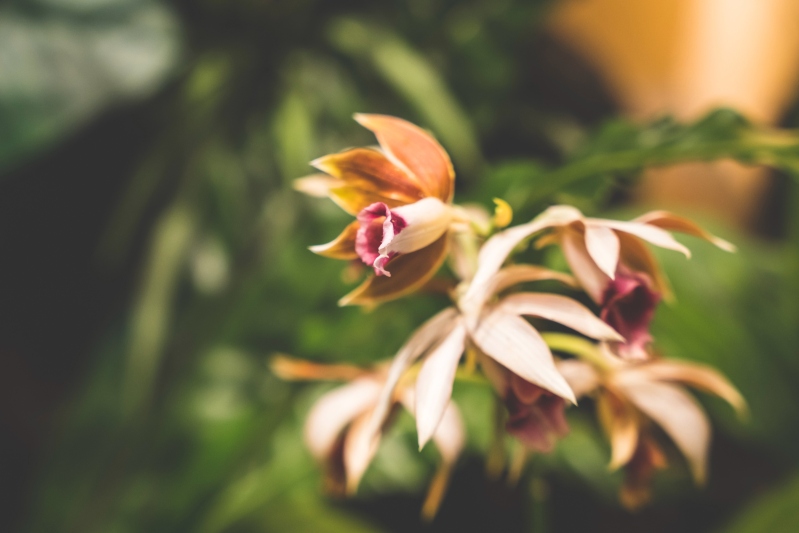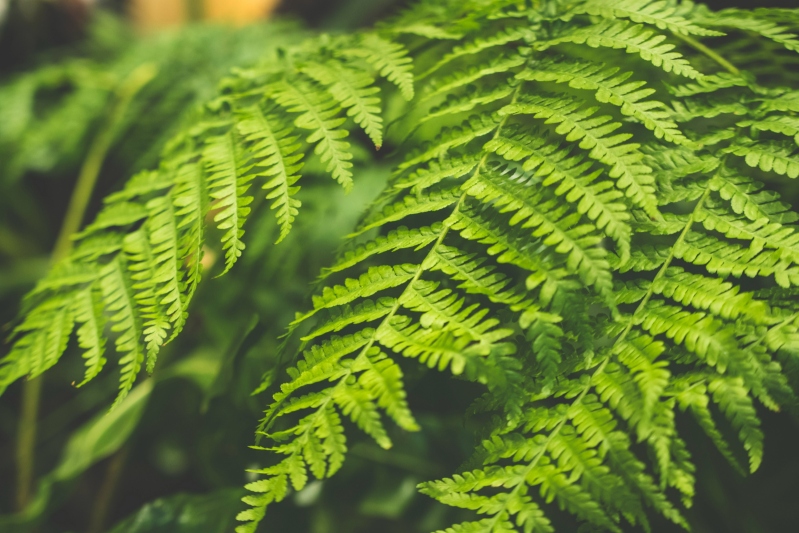Stay
News
Lobby Atrium Concept: A Doorway to Yambaru
Welcome to the healing space of nature.
"Yambaru" refers to a place where dense forests are spread out over mountain after mountain. A sense of that is reproduced in our lobby with live plants and an exhibition of rare freshwater fish.
The freshwater aquarium is home to a giant mottled eel, a mud gudgeon (or sleeper goby), and a freshwater shrimp.
"Yambaru" refers to a place where dense forests are spread out over mountain after mountain. A sense of that is reproduced in our lobby with live plants and an exhibition of rare freshwater fish.
The freshwater aquarium is home to a giant mottled eel, a mud gudgeon (or sleeper goby), and a freshwater shrimp.
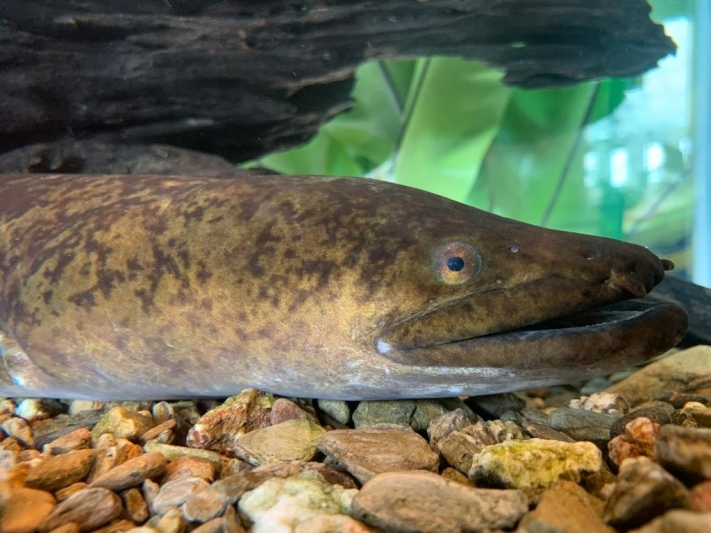
Giant Mottled Eel
Scientific Name: Anguilla marmorata
English Name: Giant mottled eel
Okinawan Name: Kaarannaji
Description:
It is similar to the Japanese eel, but it is larger. It has irregular mottled patterns of greenish-brown and black on its back and side. An adult eel is about 70cm to 1.5m and can exceed 2m, weighing up to 20kgs, making it the largest species of anguillid eels.
Ecology:
Adult eels inhabit mangrove areas and ponds where the water flow is gentle in the middle and lower ends of rivers. In rivers where the Japanese eel is found, this species tends to inhabit the lower reaches. Also similar to the Japanese eel, it migrates to the ocean to lay its eggs. It is carnivorous eating a variety of fish and crustaceans.
Distribution:
The giant mottled eel has the largest distribution area among eels stretching from East Africa to the tropical and subtropical regions of the Indo-Pacific region.
Significance:
Although it is not generally eaten, there are many areas where it is used as a medicinal food. This species and its habitat have become national and regional natural monuments in some areas.
Scientific Name: Anguilla marmorata
English Name: Giant mottled eel
Okinawan Name: Kaarannaji
Description:
It is similar to the Japanese eel, but it is larger. It has irregular mottled patterns of greenish-brown and black on its back and side. An adult eel is about 70cm to 1.5m and can exceed 2m, weighing up to 20kgs, making it the largest species of anguillid eels.
Ecology:
Adult eels inhabit mangrove areas and ponds where the water flow is gentle in the middle and lower ends of rivers. In rivers where the Japanese eel is found, this species tends to inhabit the lower reaches. Also similar to the Japanese eel, it migrates to the ocean to lay its eggs. It is carnivorous eating a variety of fish and crustaceans.
Distribution:
The giant mottled eel has the largest distribution area among eels stretching from East Africa to the tropical and subtropical regions of the Indo-Pacific region.
Significance:
Although it is not generally eaten, there are many areas where it is used as a medicinal food. This species and its habitat have become national and regional natural monuments in some areas.
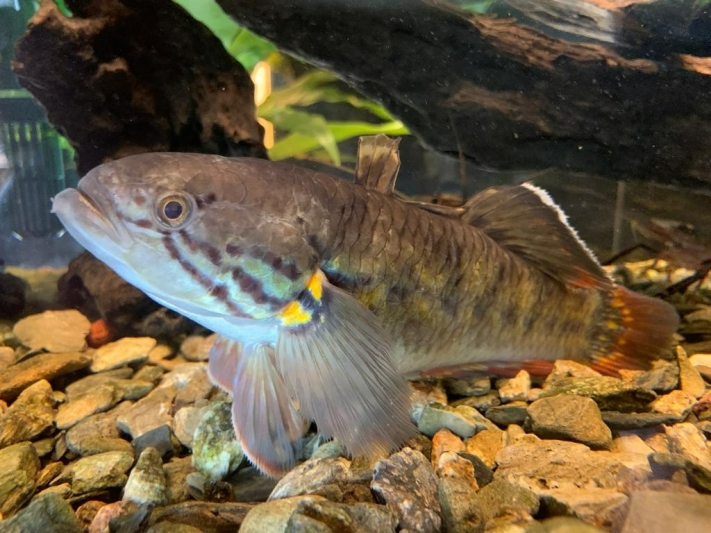
Mud Gudgeon
Scientific Name: Eleotridae
English Name: Mud gudgeon or sleeper goby
Okinawan Name: Iibuu
Description:
It resembles a mullet in shape and its body color is yellow. It can grow up to 30cm in length.
Ecology:
It inhabits middle and lower reaches of rivers where the flow is gentle and there are obstacles in the river. It often floats quietly preying on flowing insects.
Distribution:
This species is found in the western Pacific from the southern Japanese islands to the Philippines and on to the Solomon Islands.
Significance:
It is included on the endangered species list. Its threats are overfishing by traders and fish enthusiasts as well as the deterioration of the environment.
Scientific Name: Eleotridae
English Name: Mud gudgeon or sleeper goby
Okinawan Name: Iibuu
Description:
It resembles a mullet in shape and its body color is yellow. It can grow up to 30cm in length.
Ecology:
It inhabits middle and lower reaches of rivers where the flow is gentle and there are obstacles in the river. It often floats quietly preying on flowing insects.
Distribution:
This species is found in the western Pacific from the southern Japanese islands to the Philippines and on to the Solomon Islands.
Significance:
It is included on the endangered species list. Its threats are overfishing by traders and fish enthusiasts as well as the deterioration of the environment.
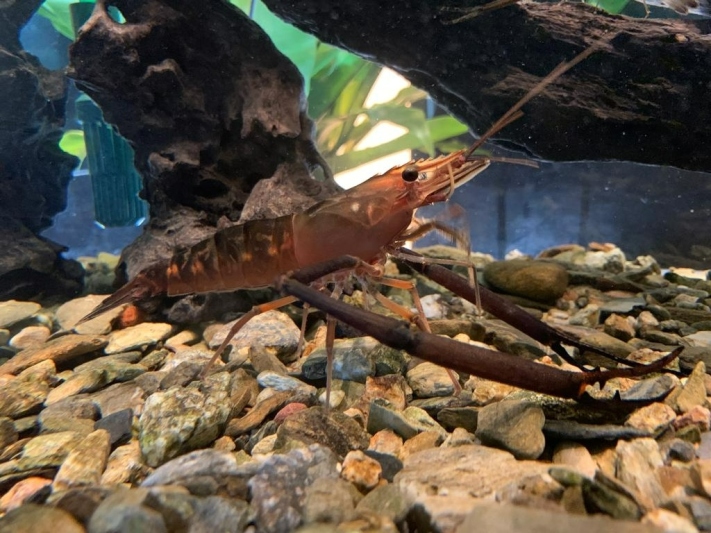
Freshwater Shrimp
Scientific Name: Macrobrachium lar
English Name: Freshwater shrimp
Okinawan Name: Ibitanaga
Description:
A large macrobrachium has a maximum body length of 15cm. It has an elongated forehead.
Ecology:
It inhabits rivers from the estuary to the upper reaches.
Distribution:
It is found from the western Pacific Ocean to the Indian Ocean and inhabits rivers as far north as Chiba Prefecture in Japan.
Scientific Name: Macrobrachium lar
English Name: Freshwater shrimp
Okinawan Name: Ibitanaga
Description:
A large macrobrachium has a maximum body length of 15cm. It has an elongated forehead.
Ecology:
It inhabits rivers from the estuary to the upper reaches.
Distribution:
It is found from the western Pacific Ocean to the Indian Ocean and inhabits rivers as far north as Chiba Prefecture in Japan.










